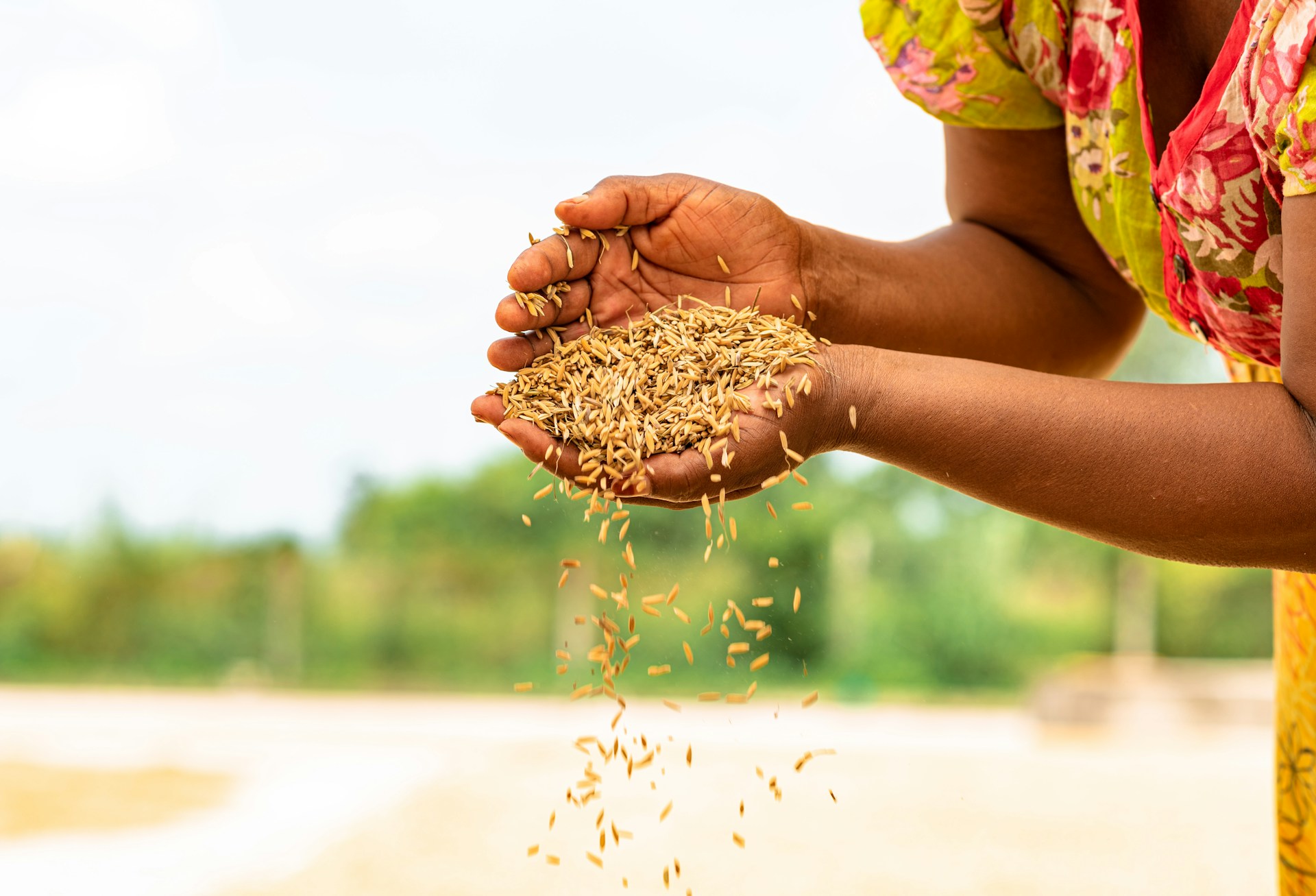As we celebrate World Health Day, a research study publishes new recommendations for reducing nutrient deficiency and gender inequality in accessing better nutrition in the East African country.
Around the world, millions of people's right to health is increasingly being threatened. Conflicts are devastating lives, causing death, pain, hunger and psychological distress. The World Health Organization (WHO) Council on the Economics of Health for All has found that although at least 140 countries recognise health as a human right in their constitution, only four countries have mentioned how to finance it.
World Health Day, celebrated on 7th April, shines a spotlight on global health awareness. To address these types of challenges, the theme for World Health Day 2024 is 'My health, my right’. The 2024 theme was chosen to champion the right of everyone, everywhere, to have access to health services, education, and information, as well as safe drinking water, clean air, good nutrition, quality housing, decent working and environmental conditions, and freedom from discrimination.
One recent research study epitomising the aims of World Health Day explores achieving good nutrition in Tanzania and overcoming inequality to democratise access to nutritious food. The study, examining knowledge gaps about micronutrient deficiencies in Tanzania and the effect of information interventions uncovered knowledge gaps in understanding micronutrient deficiencies in the East African country.
Published in the Global Food Security journal, one of the study’s key recommendations is that Tanzania's policymakers and public health officials focus on educating people about zinc deficiency.
 Researching nutrition in Tanzania
Researching nutrition in Tanzania
Using a novel research methodology, researchers in the US and Tanzania have identified new recommendations for lowering nutrient deficiency. Examining nutrition, specifically in Tanzania, was a clear choice from the outset of the study.
“In Tanzania, the National Multisectoral Nutrition Action Plan (NMAP) developed key strategies to address unacceptably high levels of micronutrient deficiency,” Dr Brandon McFadden, lead author of the research article and Professor of Agricultural Economics and Agribusiness and the Tyson Endowed Chair in Food Policy Economics for the University of Arkansas System’s Division of Agriculture, told IFIS Publishing.
The NMAP discusses the need for research to better understand public knowledge so that leaders can design communication materials to be most effective in decreasing micronutrient deficiencies.
Tanzania's National Biofortification Guidelines (NBG) declared iron, vitamin A, and zinc deficiencies significant public health concerns, which is another main driver behind conducting this research. As with many low-income countries, the researchers recognised that Tanzania experiences widespread micronutrient malnutrition. Approximately 58% of children from ages 6 to 59 months are anaemic in Tanzania, 34% are vitamin A deficient, and as many as 70% of hospitalised children in this age group are deficient in zinc, the study reported.
Biofortified crops have developed to combat micronutrient deficiencies, and it is estimated that consumers who incorporate these biofortified crops as a central part of their diet can receive up to 80 %, 100 %, and 70 % of the daily requirements for iron, vitamin A, and zinc, respectively.
In Tanzania, women and children under the age of five are disproportionately likely to be micronutrient deficient, with the WHO identifying women as being at a higher risk of a micronutrient deficiency. “So, we oversampled women from the age of 18 to 49, as this was the group most in need of communication materials,” McFadden shares. Of a total of 1,029 respondents, 806 were female.
Pius Kilasy, a co-author of the study from Tanzania and a research officer for the Tanzania Agricultural Research Institute, said the study will help his home country address a critical lack of knowledge. “Findings from the study are very important to Tanzania,” Kilasy says. “Understanding and managing to close the knowledge gap is very important in order to build a strong and stable workforce.”
The Borel Global Fellows Program funded Pius Kilasy’s graduate studies. The program funds a unique experience for students from Sub-Saharan Africa, blending studying coursework at a university in the US, enabling students to conduct research relevant to the needs of their home country.
Core findings about nutrition in Tanzania
Women were more aware than men of the potential negative health outcomes from micronutrient deficiency, the study’s results found. High-poverty households were also found to have lower overall awareness of the adverse health consequences of micronutrient malnutrition, the researchers relayed.
“Moreover, there was a low level of knowledge about the negative health consequences associated with specific micronutrient deficiencies and food that combat micronutrient deficiencies,” McFadden added.
Overall, there was relatively low awareness about zinc deficiency in Tanzania, the researchers found. “High-poverty households, which are more likely to have members who suffer from micronutrient deficiencies, were even less aware of zinc deficiency,” says McFadden. While women and high-poverty households are at higher risk for micronutrient deficiencies, they had similar perceptions about susceptibility as men and higher-income households, the researcher states.
Study participants who received educational information were more likely to identify negative health outcomes for iron, vitamin A and zinc. Emerging understanding provides information that can spur accessible, positive change. “The good news is that simple information can significantly increase knowledge about the negative health consequences associated with specific micronutrient deficiencies and foods that combat them,” McFadden shares.
In Tanzania, there is a particular need for communication materials that inform the public about adverse health outcomes and risk-reducing foods, the findings detail. A combination of educational information and branded crop information yielded the most significant improvement in lowering knowledge gaps about micronutrient deficiency, the researchers found.
If implemented, these materials could help people connect symptoms to specific deficiencies and seek foods to alleviate symptoms. Moreover, there needs to be a particular focus on materials for zinc deficiency and materials communicating the groups at disproportionate risk of deficiencies.
Impact on food research
“Hopefully, this research provides a framework for identifying the information most needed to improve dietary outcomes,” says McFadden. The researcher would like to see more similar research conducted so the content and dissemination of communication materials can be targeted to the Tanzanian population’s needs.
The research will also likely impact the manufacturing sector and new product developments (NPD). “There is a continued need for developing staple crops with improved nutrition, like biofortified crops,” says McFadden.
In the study, the researchers found that biofortified crops with a micronutrient in the name made it easier for people to identify it as a risk-reducing food. “So, it is important to think about how biofortified crops are named when developed, as it can work to ‘brand’ the food to those in need,” McFadden states.
The nutrition research and specifically insights about the communication needs of the population’s at-risk groups can inform existing initiatives such as NMAP and NBG as well as help Tanzania implement initiative strategies.
“Tanzania should implement targeted communication strategies that provide information about the prevalence of micronutrient deficiencies and risk-reducing food options branded with targeted micronutrients to reduce knowledge gaps most effectively,” the study concludes.
The study does not cover whether being better-informed leads to action. Future research could examine whether having knowledge about deficiencies, susceptibility, adverse health outcomes, and risk-reducing foods results in a behavioural change, such as consumption of foods with higher levels of specific micronutrients.
Co-author Kilasy said that worldwide hunger has become so common that research like this can help inform decision-makers “to look for various alternatives on solving community challenges arising due to lack of sufficient knowledge”.
Editorial notes
Source:
-
Interview with Dr Brandon McFadden, lead author of the research article and Professor of Agricultural Economics and Agribusiness and the Tyson Endowed Chair in Food Policy Economics for the Arkansas Agricultural Experiment Station, the research arm of the University of Arkansas System Division of Agriculture.



